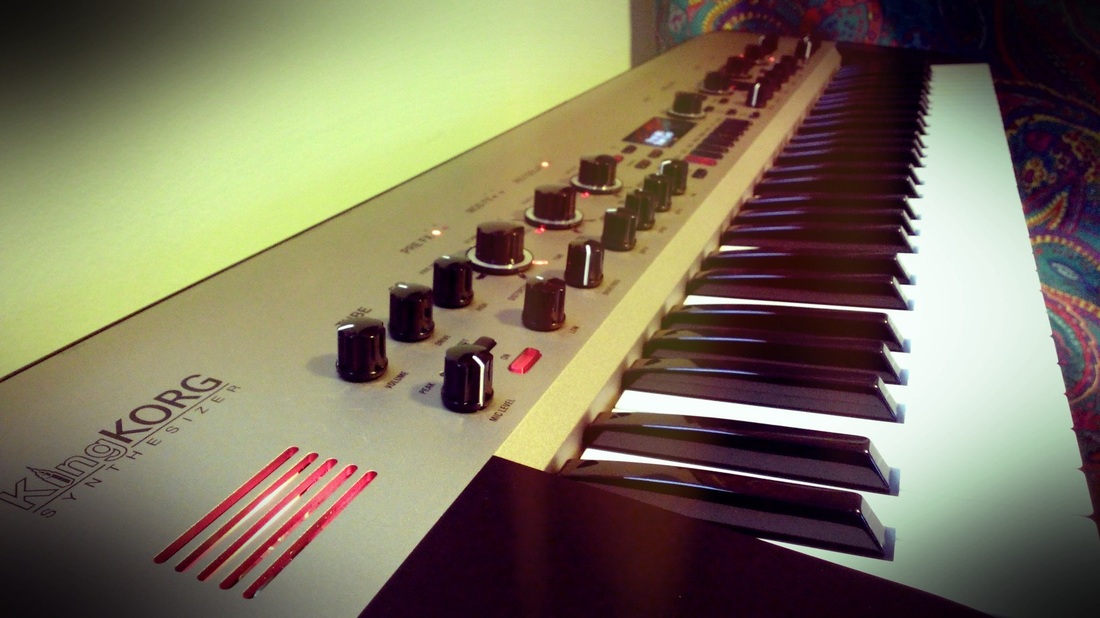As you can see, It is a gold sort of color. To be honest, I don't really care for it. I prefer gear to be black, grey or possibly silver, and hammerite finish if at all possible. So the color, along with the dopey name were two things I had to get over. The color is growing on me. The name is not.
What you have here is a three oscillator, virtual analog synth with an effects section. There are multiple waveform options in the analog style which include the basics and dual, unison, X-mod (fm), and ring mod versions. In addition there are all 64 of the DWGS waveforms that many will know from previous Korg products. A set of PCM waveforms cover basic piano, organ, Clav and Mellotron bases and there is a mic input for vocoder duties.
The filter section has excellent models of Moog, Oberheim, P5, 303, and MS-20 filters. There is a KingKorg filter as well that is very nice. All of the filters come in Low pass, high pass, and band pass options. They are smooth and creamy without the stepping that we have come to expect from modeled filters. Top marks go to Korg for the filter design.
You can layer two sounds or split the keyboard between two sounds. The oscillator section has it's own lcd screen so you can see which waveform you have loaded for each oscillator. The controls are all clearly laid out and you will have no trouble figuring out what is going on.
In addition to the mic input the KingKorg also has CV/gate out from a stereo mini plug. I have not done anything with either feature, but the possibilities are sparking ideas for future experiments. That is one of the best benefits of a great piece of gear.
I know that there is a lot of fuss made on various websites about analog polysynths. Why can't we have them and why can't they cost 500 bucks? Of course the answer to the last is cost. But the truth to tell is that the virtual synth has come a very long way since the late 90s. The KingKorg does some very convincing impressions of some classic, expensive and electronically unreliable gear of yesteryear. I had a P-600 a few years back. It sounded great, when it worked. Same could be said for the Akai Ax-60 that I once owned and several others. I got really tired of working on them. Now days you can save up for a Dave Smith poly of one design or another and you will have a great sounding and reliable, modern polysynth. But The KingKorg can get in to areas that you simply cannot reach with triangle, squares and saws. It will set up back far less with secondhand units going for $800-900.
I have recorded a track called Black Sun using only the KingKorg and it's built in effects. One patch uses some of the Inharmonic DWGS waves, which were switched and manipulated in real time during recording. The other patch employs various combinations of X-mod and ring mod waveforms, which were also swapped and controlled during recording. It's easy to change LFO settings, turn effects on/off, select different waveforms and more. You can do this on the fly.
Give the track a listen and then drop down for some final thoughts.
But the bottom line for me is the sound. It just sounds very analog, when you want it to. Very lush, The quality sound and the price make the bang-for-the-buck factor very high. Try one out with a decent set of headphones. I think a lot of people will be very surprised when they give this instrument an honest listen.


 RSS Feed
RSS Feed
